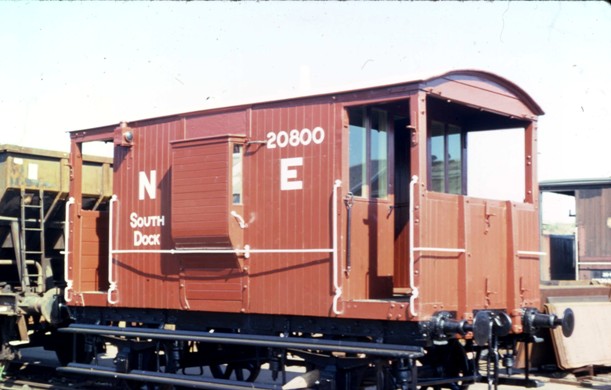65447 wrote:1. The Brake Van is not to an accurate LNER diagram but has been modified during subsequent ownership and, possibly, preservation. Note that the VCT data panel records its sale. The original would have been a Toad 'B' brake van to Diagram 34, built Doncaster 1929, but would almost certainly have had full-height timber end stanchions or, by that date, possibly angle iron stanchions, and certainly more handrails. Do not use this photograph as the basis for a model;
I'll definitely keep that in mind, interestingly there's another Toad B located at the Electric Railway Museum, Coventry
 http://www.ws.vintagecarriagestrust.org ... p?Ref=8900
http://www.ws.vintagecarriagestrust.org ... p?Ref=8900
that has has metal duckets rather than wooden ones but is listed as the diagram you mentioned,a sign of alteration in preservation perhaps?
so I may have to visit both and create a composite reference, getting references of the most original aspects of both. or make two versions if it turns out they had both types (or four in the case of angle iron end-stanchions
2. LNER 12/13 Ton Single Bolster to Diagram 197, built Shildon 1947/48;
duly noted, thanks

3. Departmental conversion of a 5-plank 12 Ton Pipe Wagon. The VCT data panel suggests an original number that would place it to Diagram 103, built Dukinfield 1936;
already have a 103 on the list of wagons to research, but I'll still look into it as a potential variation to do

4. The overpainting in Private Owner livery is deceiving as is the VCT data panel description 'mineral wagon' and neither does it show any indication of an end door that would make it a 'tippler'. A steel underframe dates it to later in the LNER period, a 6 plank 10' wheelbase merchandise wagon probably to Diagram 185;
same as with 3, already got one of those noted down. in this instance it can be disregarded.
5. Difficult to comment on this one. The VCT data panel states 'flat wagon', which it may be now, but it appears to have been a high-sided merchandise wagon originally, note the cut-off end angle iron stanchions, the ends of the side curb rails and the recess over the headstock where the end planks would rise.
I'll stick this one on the backburner and look further into it if I ever find myself in the area.
many thanks for the help






